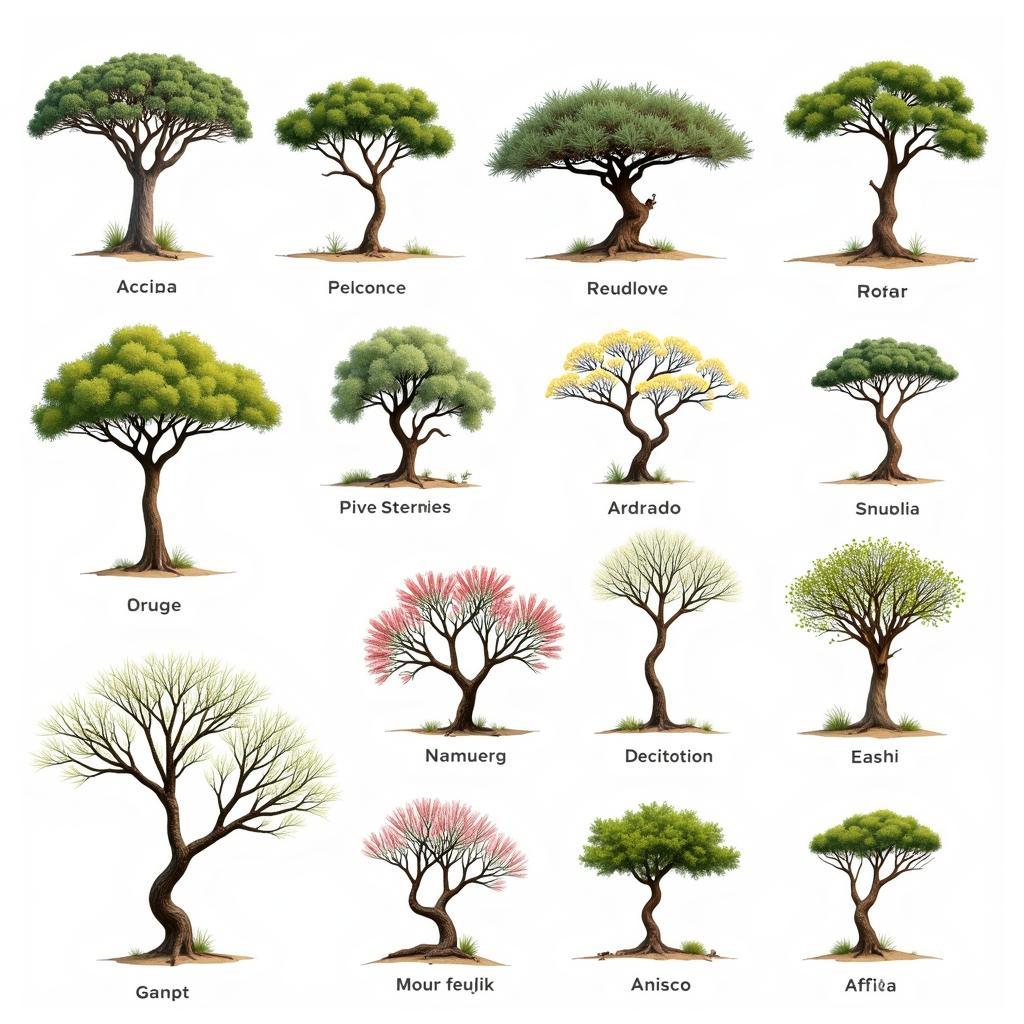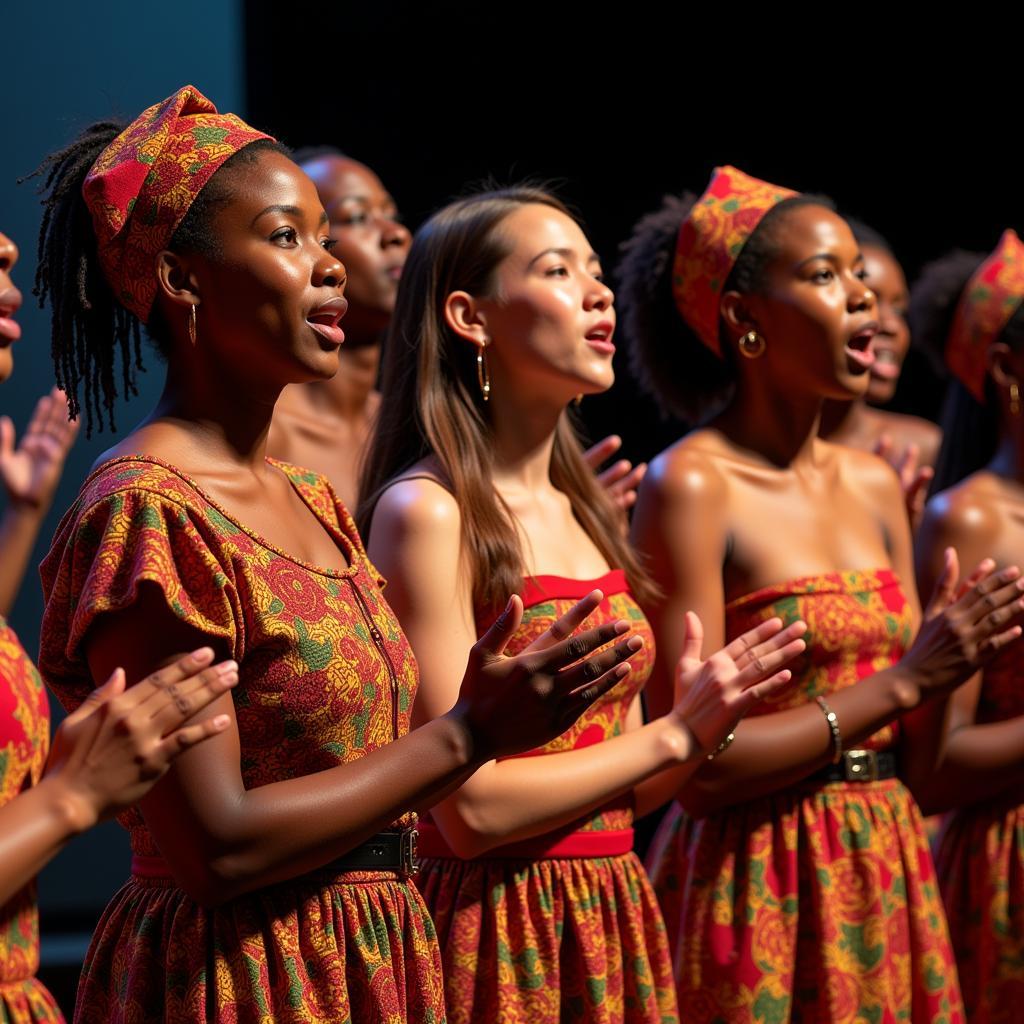African Acacia Tree for Sale: A Guide to Choosing, Planting, and Caring
The African acacia tree, a symbol of resilience and beauty, is increasingly popular for landscaping and gardens worldwide. Whether you’re looking for an African Acacia Tree For Sale for its striking silhouette or its ability to thrive in arid climates, this guide offers valuable insights into selecting, planting, and nurturing these remarkable trees. We’ll explore the diverse varieties, discuss their unique characteristics, and provide practical advice for successful cultivation.
Unveiling the Allure of the African Acacia
African acacias, belonging to the genus Acacia, encompass a wide range of species, each with distinct features. These trees, characterized by their feathery foliage, vibrant blossoms, and often thorny branches, are adapted to the diverse environments of the African continent. Their resilience to drought and harsh conditions makes them a desirable choice for xeriscaping and sustainable landscaping. Choosing the right species is crucial, and understanding the specific needs of each variety ensures successful growth and longevity. Are you ready to bring a touch of the African savanna to your garden?
Selecting Your Ideal African Acacia Tree for Sale
When searching for an African acacia tree for sale, consider your local climate, soil type, and available space. Some popular species include the Acacia tortilis (Umbrella Thorn), known for its distinctive umbrella-shaped canopy, and the Acacia senegal, prized for its gum arabic production. The Acacia karroo (Sweet Thorn), with its fragrant yellow flowers, is another attractive option. Carefully research the mature size of the tree to ensure it will fit comfortably in your chosen location. Consider the tree’s growth rate, its tolerance to specific conditions, and its potential impact on the surrounding landscape.
Key Factors to Consider When Buying an Acacia Tree
- Climate Compatibility: Choose a species that thrives in your region’s temperature and rainfall patterns.
- Soil Requirements: Acacias generally prefer well-drained soil.
- Mature Size: Consider the tree’s eventual height and spread.
- Growth Rate: Some species grow faster than others.
- Pest and Disease Resistance: Select varieties known for their resilience.
- Aesthetic Preferences: Choose a tree with the desired foliage, flowers, and overall form.
Planting and Caring for Your African Acacia
Proper planting and care are essential for the health and longevity of your African acacia. Choose a sunny location with well-drained soil. Dig a hole twice as wide as the root ball and plant the tree at the same depth it was growing in the container. Water deeply after planting and regularly during the first growing season. Once established, acacias are relatively drought-tolerant. However, supplemental watering during extended dry periods can promote vigorous growth.
Watering and Fertilizing Your Acacia
Watering requirements vary depending on the species and climate. While established acacias are drought-tolerant, young trees benefit from regular watering, especially during dry periods. Fertilizing is generally not necessary, but a light application of a balanced fertilizer in spring can promote healthy growth. Avoid over-fertilizing, as this can lead to excessive vegetative growth and reduced flowering.
Pruning and Maintenance
Pruning is typically minimal but can be done to shape the tree or remove dead or damaged branches. Prune during the dormant season to minimize stress on the tree. Be mindful of the thorns when pruning and wear protective gloves. Regular inspection for pests and diseases can help prevent potential problems.
The Significance of the Acacia in African Culture
Beyond its aesthetic appeal, the African acacia holds deep cultural significance across the continent. It provides shade, fodder for livestock, and various medicinal uses. Its wood is used for building and crafting, and its gum is a valuable resource. The acacia often features in folklore and traditional practices, symbolizing resilience, strength, and connection to the land.
“The acacia is more than just a tree,” explains Dr. Anika Nkosi, ethnobotanist and expert on African flora. “It’s a vital part of the ecosystem and a symbol of cultural heritage, deeply interwoven with the lives of many communities across Africa.” Its resilience and adaptability make it a powerful symbol of survival in challenging environments.
Conclusion: Bringing a Piece of Africa Home
The African acacia tree for sale offers a unique opportunity to bring a piece of Africa’s natural beauty and cultural heritage to your landscape. By carefully selecting the right species, providing appropriate care, and appreciating its significance, you can enjoy the enduring beauty and resilience of this remarkable tree for years to come. Remember to research thoroughly and choose a reputable supplier to ensure you acquire a healthy and well-adapted tree.
 African Acacia Tree Variety
African Acacia Tree Variety
“Choosing the right acacia species is the first step to success,” adds Dr. Nkosi. “Understanding its specific needs will ensure its healthy growth and integration into your landscape.” With the right knowledge and care, your African acacia will thrive, adding a touch of the savanna to your surroundings.
FAQs: Your Questions Answered
1. What is the average lifespan of an African acacia tree? African acacias can live for several decades, with some species exceeding 50 years.
2. How often should I water my newly planted acacia? Water deeply after planting and regularly during the first growing season. Once established, water deeply but less frequently.
3. Are African acacias susceptible to any specific pests or diseases? While generally hardy, some acacias can be susceptible to borers or fungal diseases. Regular inspection and preventative measures are recommended.
4. Can I grow an African acacia in a container? Some smaller species can be grown in containers, but they will require regular pruning and repotting.
5. Where can I find a reputable supplier of African acacia trees for sale? Local nurseries specializing in exotic or drought-tolerant plants are a good starting point.
6. Are all African acacias thorny? While many acacias have thorns, some thornless varieties are available.
7. How can I tell if my acacia is getting enough water? Monitor the soil moisture and look for signs of wilting or leaf drop.
For further assistance, explore our article on african birds in. You can also find more information on specific acacia species and their care requirements on our website.
When you need assistance please contact Phone Number: +255768904061, Email: kaka.mag@gmail.com Or visit us at: Mbarali DC Mawindi, Kangaga, Tanzania. We have a 24/7 customer service team.

